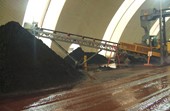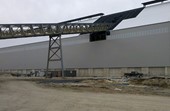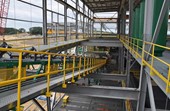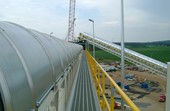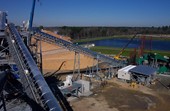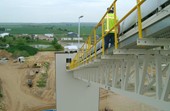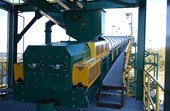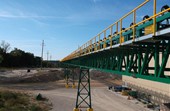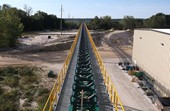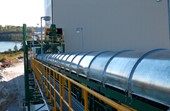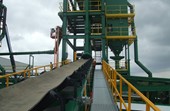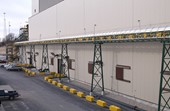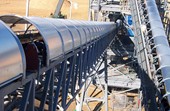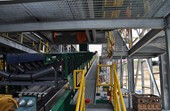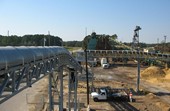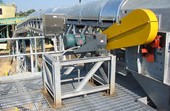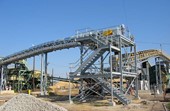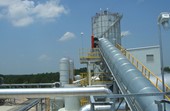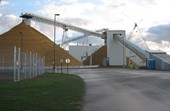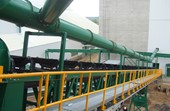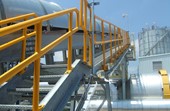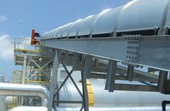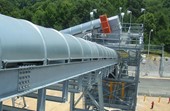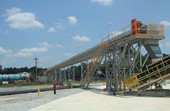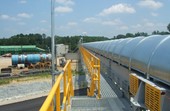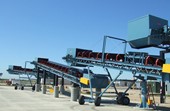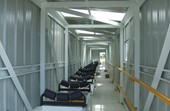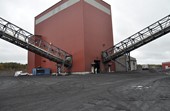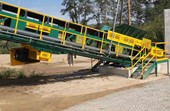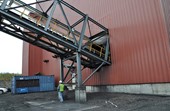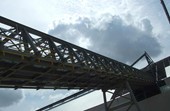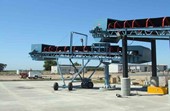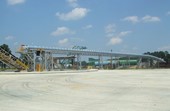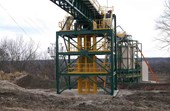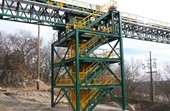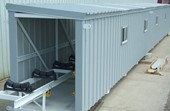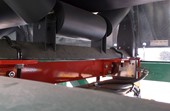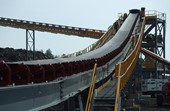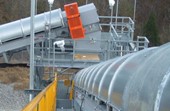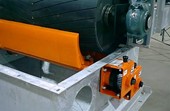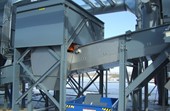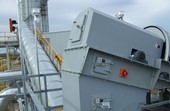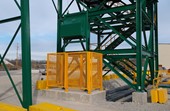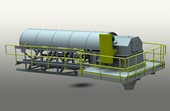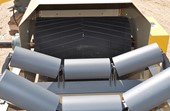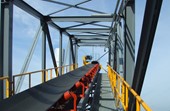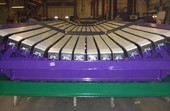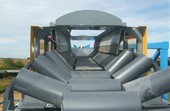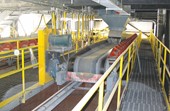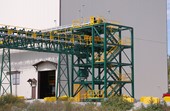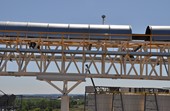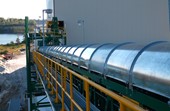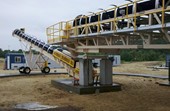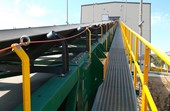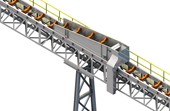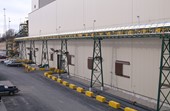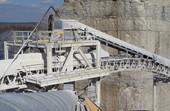Series-TCTR
Features
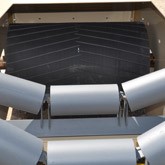 CEMA Standard Pulleys and IdlersThese components are readily available for quick replacement.
CEMA Standard Pulleys and IdlersThese components are readily available for quick replacement.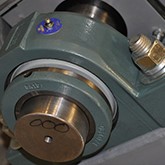 Industrial Grade BearingsBrands can be of the customer’s choice or Rapat will provide our standard offering.
Industrial Grade BearingsBrands can be of the customer’s choice or Rapat will provide our standard offering.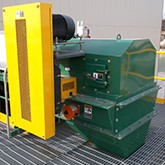 Industrial Grade Drives and MotorsBrands can be of the customer's choice or Rapat will provide our standard offering.
Industrial Grade Drives and MotorsBrands can be of the customer's choice or Rapat will provide our standard offering.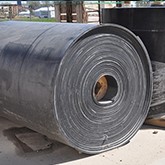 Heavy Duty BeltingVarious compounds and patterns are available based on your application requirements.
Heavy Duty BeltingVarious compounds and patterns are available based on your application requirements.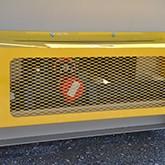 Protected Screw Take-UpsA mechanical take-up to remove slack from the belt and maintain tension. Proper selection is based on the application requirements.
Protected Screw Take-UpsA mechanical take-up to remove slack from the belt and maintain tension. Proper selection is based on the application requirements.

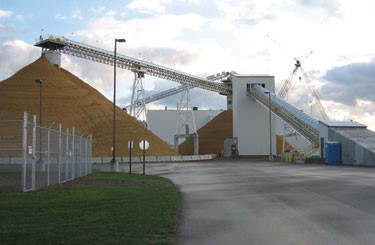
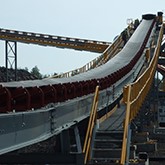 Beam Frame A structural w-beam frame conveyor designed to span between support locations and meet site loading requirements. Walkway(s) can be supported from the truss, as required.
Beam Frame A structural w-beam frame conveyor designed to span between support locations and meet site loading requirements. Walkway(s) can be supported from the truss, as required.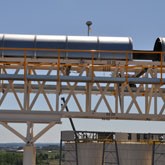 Box Truss Frame A welded structural steel boxed-shaped frame conveyor designed to span between support locations and meet site loading requirements. Walkway(s) can be supported from the truss, as required.
Box Truss Frame A welded structural steel boxed-shaped frame conveyor designed to span between support locations and meet site loading requirements. Walkway(s) can be supported from the truss, as required.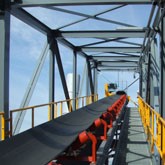 Gallery Truss A square structural steel frame that surrounds the conveyor and walkway(s). These can be enclosed with sheeting or left open.
Gallery Truss A square structural steel frame that surrounds the conveyor and walkway(s). These can be enclosed with sheeting or left open.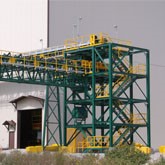 Transfer Towers A structural steel support tower where one conveyor transitions and feeds into another. These are designed for each application and can include stairways, handrails and platforms.
Transfer Towers A structural steel support tower where one conveyor transitions and feeds into another. These are designed for each application and can include stairways, handrails and platforms.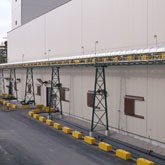 Support Bents A structural steel support frame designed and fabricated to support a conveyor at an elevation. These are designed and fabricated to accommodate the elevation and loads of the jobsite.
Support Bents A structural steel support frame designed and fabricated to support a conveyor at an elevation. These are designed and fabricated to accommodate the elevation and loads of the jobsite.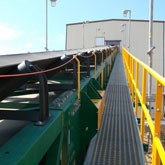 Walkways A platform with a safety handrail that is supported off the side of a conveyor from which a person can walk along the length of a conveyor for maintenance and access. These can be on one or both sides of a conveyor.
Walkways A platform with a safety handrail that is supported off the side of a conveyor from which a person can walk along the length of a conveyor for maintenance and access. These can be on one or both sides of a conveyor.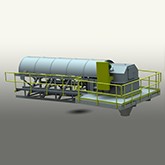 Service PlatformsA platform for safely accessing and maintaining key areas of a conveyor
Service PlatformsA platform for safely accessing and maintaining key areas of a conveyor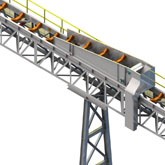 Traveling Tripper A tripper discharge that travels on a rail system along a conveyor's length and allows for product to be discharged at any point along the conveyor. These are commonly used to fill flat bottom storage buildings.
Traveling Tripper A tripper discharge that travels on a rail system along a conveyor's length and allows for product to be discharged at any point along the conveyor. These are commonly used to fill flat bottom storage buildings.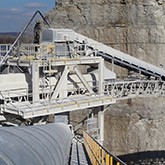 Fixed TripperAn intermediate discharge that allows for material to be discharged prior to the end of the conveyor.
Fixed TripperAn intermediate discharge that allows for material to be discharged prior to the end of the conveyor.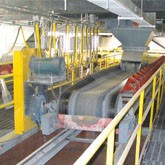 Shuttle A reversing belt conveyor that is mounted on a rail system where the entire conveyor shuttles back and forth, allowing for continuous discharge points. These are commonly used to fill flat bottom storage buildings.
Shuttle A reversing belt conveyor that is mounted on a rail system where the entire conveyor shuttles back and forth, allowing for continuous discharge points. These are commonly used to fill flat bottom storage buildings.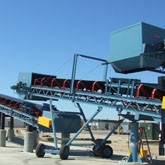 Stacker A belt conveyor that is used to “stack” or drop material into a stockpile. A stacker can be “fixed” to place material at a single location or “radial” to spread material over a larger area.
Stacker A belt conveyor that is used to “stack” or drop material into a stockpile. A stacker can be “fixed” to place material at a single location or “radial” to spread material over a larger area.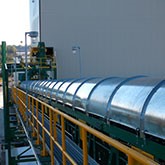 Top Covers Top covers are a common option which help protect the product and conveyor belting from the elements and also help protect employees and ensure safe operation. Galvanized, hooped top covers are most common. They stand up well in the harshest of environments. They are also offered in a galvanized corrugated version. Both types are also available in stainless steel.
Top Covers Top covers are a common option which help protect the product and conveyor belting from the elements and also help protect employees and ensure safe operation. Galvanized, hooped top covers are most common. They stand up well in the harshest of environments. They are also offered in a galvanized corrugated version. Both types are also available in stainless steel.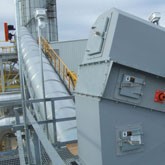 Discharge Hoods A hood that covers the head pulley and where the material is transitioned out of the conveyor. They are flanged to connect to other equipment or chute work and available with a variety of wear liner options. They contain dust and emissions and keep product contained at the transitions.
Discharge Hoods A hood that covers the head pulley and where the material is transitioned out of the conveyor. They are flanged to connect to other equipment or chute work and available with a variety of wear liner options. They contain dust and emissions and keep product contained at the transitions.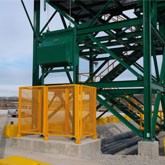 Gravity Take-Up A device that automatically adjusts using a counterweighted pulley to maintain proper tension on the belt. These are generally used on longer conveyors where mechanical take-ups are no longer practical.
Gravity Take-Up A device that automatically adjusts using a counterweighted pulley to maintain proper tension on the belt. These are generally used on longer conveyors where mechanical take-ups are no longer practical.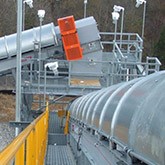 Chutes/Transitions Customized chutes and transitions are designed to move product to and from conveyors and other process equipment. These are available with a variety of wear liner options, depending on the material being conveyed.
Chutes/Transitions Customized chutes and transitions are designed to move product to and from conveyors and other process equipment. These are available with a variety of wear liner options, depending on the material being conveyed.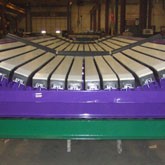 Impact Beds A series of cushioned bars used to absorb loading forces under a conveyor belt in the loading zone. These vary depending on the material being conveyed and the distance of the product being dropped onto the belt.
Impact Beds A series of cushioned bars used to absorb loading forces under a conveyor belt in the loading zone. These vary depending on the material being conveyed and the distance of the product being dropped onto the belt.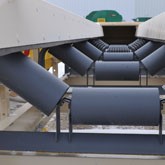 Skirting Replaceable rubber seals that contact the conveyor belt to contain product through the loading area. These are adjustable and can be lined with a variety of wear liners.
Skirting Replaceable rubber seals that contact the conveyor belt to contain product through the loading area. These are adjustable and can be lined with a variety of wear liners.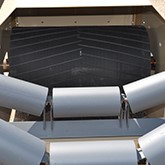 Mine Duty & Engineered Class PulleysMine duty pulleys are heavier duty than standard pulleys for harsh environments. When mine duty pulleys still don’t meet the required belt tensions and durability requirements of an application, pulleys can be engineered to meet those demands.
Mine Duty & Engineered Class PulleysMine duty pulleys are heavier duty than standard pulleys for harsh environments. When mine duty pulleys still don’t meet the required belt tensions and durability requirements of an application, pulleys can be engineered to meet those demands.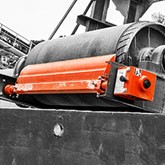 Belt Cleaners A device that uses a tensioned blade mounted on a supporting structure to remove material that clings to the belt beyond the normal discharge point. The material, size and tension are determined by the product and its characteristics. These are often mounted inside the discharge hood, so product cleaned off the belt falls into the discharge.
Belt Cleaners A device that uses a tensioned blade mounted on a supporting structure to remove material that clings to the belt beyond the normal discharge point. The material, size and tension are determined by the product and its characteristics. These are often mounted inside the discharge hood, so product cleaned off the belt falls into the discharge.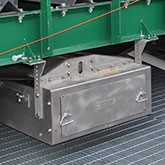 Wash BoxA device that uses pressurized water and a series of belt cleaners to clean especially tacky material from a belt.
Wash BoxA device that uses pressurized water and a series of belt cleaners to clean especially tacky material from a belt.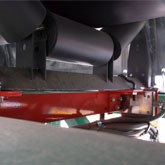 Belt Scale A device that weighs the amount of product moved on a belt conveyor. These vary per application and accuracy requirements.
Belt Scale A device that weighs the amount of product moved on a belt conveyor. These vary per application and accuracy requirements.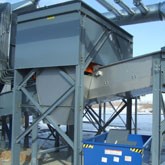 Belt Magnet A device for removing ferrous metals from the product as it moves on a belt conveyor in order to prevent damage to downstream equipment. Size and mounting location vary per application.
Belt Magnet A device for removing ferrous metals from the product as it moves on a belt conveyor in order to prevent damage to downstream equipment. Size and mounting location vary per application.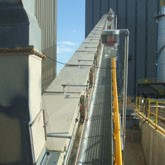 Water Deluge Lines Pressurized water lines with diffusers that can be attached to a conveyor to flood the product with water in order to suppress dust and extinguish potential fires. This is a unique option for specific applications.
Water Deluge Lines Pressurized water lines with diffusers that can be attached to a conveyor to flood the product with water in order to suppress dust and extinguish potential fires. This is a unique option for specific applications.